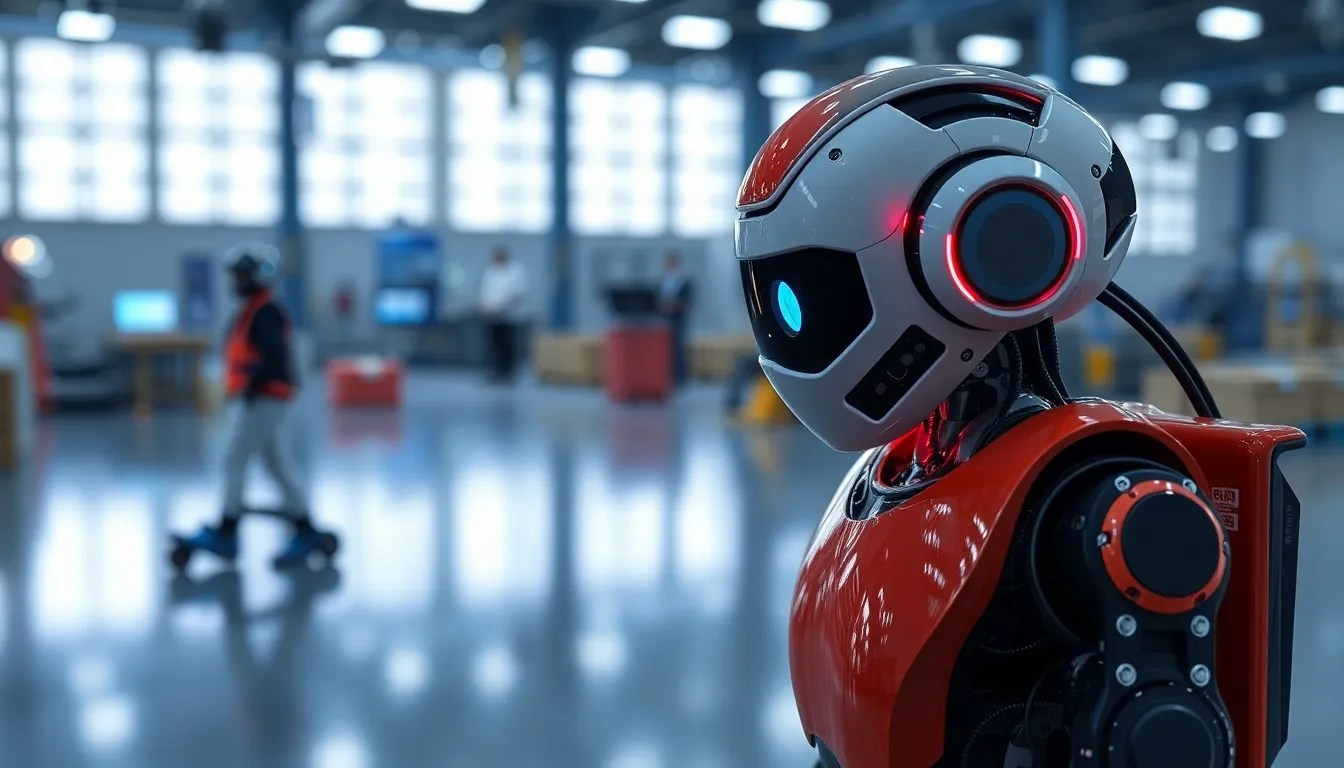How Autonomous Robots are Transforming the Field of Workforce Development
I. Introduction
Autonomous robots are machines capable of performing tasks without human intervention. They utilize advanced technologies such as artificial intelligence (AI), machine learning, and computer vision to navigate their environments and make decisions.
Workforce development refers to the range of activities and strategies aimed at improving the skills and capabilities of the labor force. It is a critical component for economic growth, enabling individuals to acquire skills necessary for current and future job markets.
This article explores the intersection of autonomous robots and workforce development, examining how these cutting-edge technologies are transforming industries and reshaping the future of work.
II. The Rise of Autonomous Robots
The journey of robotics in the workforce has evolved significantly over the past century. Initially, robots were large, stationary machines used in manufacturing, primarily for tasks like welding and assembly. However, advancements in technology have led to the development of more sophisticated, mobile, and autonomous systems.
Recent advancements in autonomous technology have resulted in robots that can perform complex tasks across various sectors, including healthcare, agriculture, logistics, and customer service. These developments are driven by key players in the robotics industry, such as:
- Boston Dynamics
- ABB
- iRobot
- Amazon Robotics
- Fanuc
III. Enhancing Efficiency and Productivity
One of the most significant advantages of integrating autonomous robots into the workforce is the automation of repetitive tasks. Autonomous systems can work around the clock, completing tasks faster and with greater precision than human workers.
This shift has notable impacts on production timelines and operational costs, leading to:
- Increased output and productivity
- Reduced labor costs
- Minimized human error
Various industries have already seen the benefits of robotic integration. For instance:
- Manufacturing: Robots perform assembly line tasks, reducing production time.
- Agriculture: Autonomous drones and tractors optimize planting and harvesting.
- Logistics: Automated warehouses streamline order fulfillment processes.
IV. Skills Development and Training
As the adoption of autonomous robots grows, the skill requirements in the workforce are changing. Workers are increasingly expected to be proficient in technology, problem-solving, and critical thinking.
Autonomous robots play a crucial role in training programs by:
- Providing hands-on experience with technology
- Facilitating simulations for complex tasks
- Enhancing learning through interactive experiences
Collaboration between educational institutions and tech companies has become essential in preparing the workforce for a future where autonomous systems are commonplace. Initiatives such as internships, apprenticeships, and specialized courses in robotics and automation have emerged to bridge the skills gap.
V. Job Displacement vs. Job Creation
The rise of autonomous robots has sparked debates about job displacement. While some jobs may be at risk due to automation, it is essential to analyze the broader picture. Jobs that are most vulnerable include:
- Repetitive manual labor roles
- Basic data entry positions
- Assembly line jobs in manufacturing
However, the integration of robotics also leads to the creation of new job roles, such as:
- Robotics technicians
- AI specialists
- Data analysts
- Automation consultants
Balancing workforce displacement with innovation opportunities is crucial to ensure a smooth transition into a more automated future.
VI. Ethical Considerations and Workforce Equity
The deployment of autonomous robots raises several ethical considerations, including the impact on job security, privacy concerns, and the potential for bias in AI algorithms. Addressing these implications is vital for fostering a responsible approach to workforce development.
Ensuring equitable access to technology is another critical factor. Policymakers must work to create frameworks that facilitate access to training and resources for all individuals, especially those from underrepresented communities.
The role of policy in shaping the future of work cannot be overstated. Governments and organizations must collaborate to create regulations that promote ethical practices in the development and deployment of autonomous technologies.
VII. Future Trends in Workforce Development and Robotics
Looking ahead, several predictions and potential breakthroughs may shape the future of autonomous robots and workforce development:
- Increased collaboration between humans and robots in hybrid work environments.
- Advancements in AI leading to more intuitive and adaptive robots.
- Expansion of robotics beyond manufacturing into service sectors like healthcare and hospitality.
- Emergence of new industries centered around robotics and automation technologies.
The global labor market will likely evolve to accommodate these changes, emphasizing the need for continuous learning and adaptation among the workforce.
VIII. Conclusion
Autonomous robots are undeniably transforming the landscape of workforce development. Their ability to enhance efficiency, streamline operations, and reshape job roles presents both challenges and opportunities for the future.
As we navigate this new era, the importance of adaptation and continuous learning becomes paramount. Fostering a collaborative future between humans and robots will ensure that society leverages the benefits of technology while addressing the inherent challenges it brings.
Embracing this transformation with a proactive and inclusive approach will pave the way for a workforce that is not only skilled but also resilient in the face of change.



